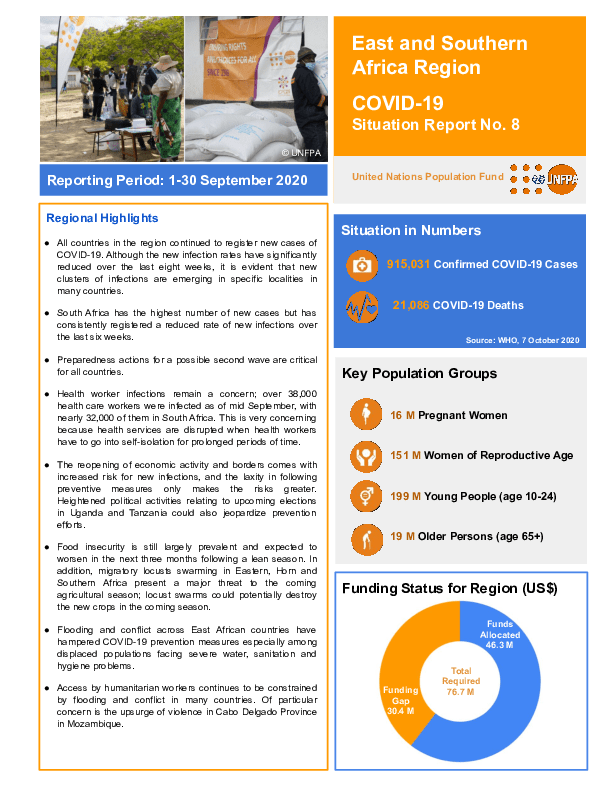Regional Highlights
- All countries in the region continued to register new cases of COVID-19. Although the new infection rates have significantly reduced over the last eight weeks, it is evident that new clusters of infections are emerging in specific localities in many countries.
- South Africa has the highest number of new cases but has consistently registered a reduced rate of new infections over the last six weeks.
- Preparedness actions for a possible second wave are critical for all countries.
- Health worker infections remain a concern; over 38,000 health care workers were infected as of mid September, with nearly 32,000 of them in South Africa. This is very concerning because health services are disrupted when health workers have to go into self-isolation for prolonged periods of time.
- The reopening of economic activity and borders comes with increased risk for new infections, and the laxity in following preventive measures only makes the risks greater. Heightened political activities relating to upcoming elections in Uganda and Tanzania could also jeopardize prevention efforts.
- Food insecurity is still largely prevalent and expected to worsen in the next three months following a lean season. In addition, migratory locusts swarming in Eastern, Horn and Southern Africa present a major threat to the coming agricultural season; locust swarms could potentially destroy the new crops in the coming season.
- Flooding and conflict across East African countries have hampered COVID-19 prevention measures especially among displaced populations facing severe water, sanitation and hygiene problems.
- Access by humanitarian workers continues to be constrained by flooding and conflict in many countries. Of particular concern is the upsurge of violence in Cabo Delgado Province in Mozambique.
Workflow State
Published
Resource Date

Date selector
Show Year and Month
Publisher
UNFPA
Resource Document
Available Languages
Resource PDF Upload
ESARO_Sitrep_8_2.pdf499.78 KB
